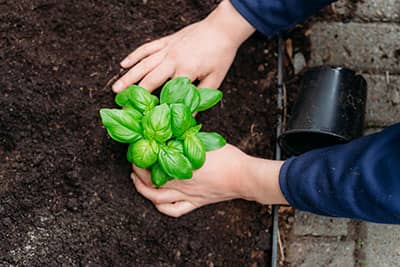Know How to Start a Successful Herb Garden
With a patch of soil and a sunny spot, you can easily start your own herb garden. These plants add beauty to your landscape and homegrown seasoning to your meals. Follow these simple instructions for starting a herb garden and reap the benefits of your work within just a few weeks.
Select a Location
Choose an area that gets lots of sun, or a bit of shade if your region regularly has temperatures topping 90 degrees in the summer months. Depending on the herbs you decide on for your garden, you'll need a spot with a diameter of 1 to 4 feet for each plant. Cilantro, parsley, dill and chives do well with a foot of space each. You'll need a 2-foot space for tarragon, thyme and basil. Marjoram, oregano, mint, sage and rosemary plants need 3 to 4 feet of space to thrive.
If you live in a home without a yard, you can also grow a DIY herb garden with containers. Start with plastic or clay pots measuring between 8 and 18 inches. You can also recycle containers you have around the house to boost the green quotient of your garden. Make sure these makeshift pots have drainage holes to prevent the plants from getting too much water.
You can combine many types of herbs together in the same container. For example, sage, thyme and rosemary do well in the same pot, as do parsley, basil, cilantro and tarragon. If you plan to plant mint, keep it in its own container. It spreads aggressively, so it doesn't do well with other plants.
Place the herbs on a sunny patio or step, or near a window. Whether you have an indoor or outdoor garden, check to make sure your herbs will get at least four hours of light each day.
Prep the Earth
Loosen the soil in your herb garden with a shovel or garden fork to make room for the roots of the plants. This step also improves drainage so water can reach the roots. Then, mix fertilizer or compost into your soil to add nutrients and further improve drainage.
Care for Your Plants
In general, you should water your herb plants when the soil feels dry to the touch. Check every day, but do not water unless necessary since excess moisture can stunt your plants or cause disease.
When your herb plant reaches about 6 inches in height, trim about a third of the branches. Prune the plant close to where the leaves split off for fast regrowth.










